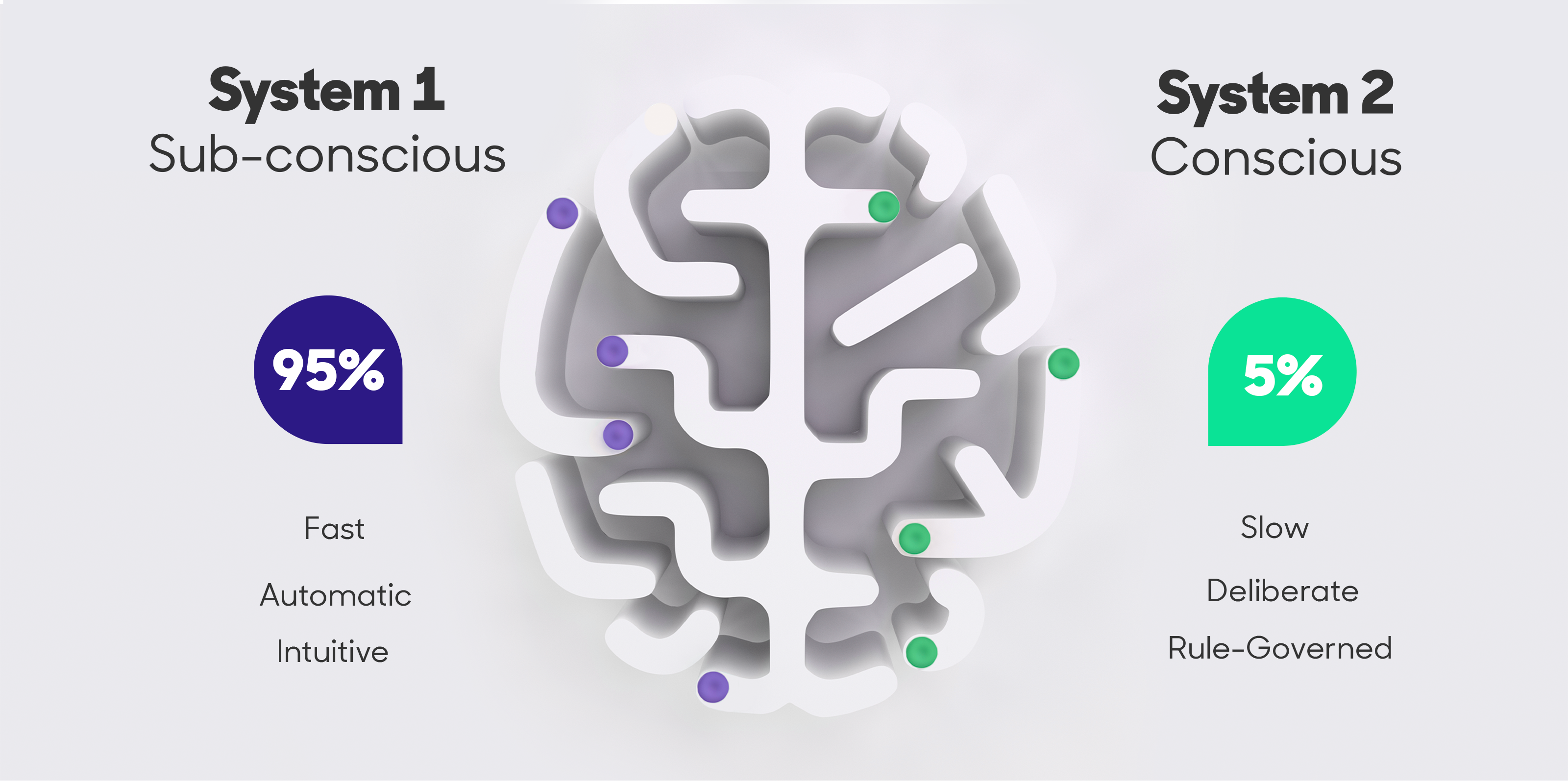Posted on September 25, 2020
Updated on February 15, 2021
3 min read time

Of course, it’s true we're capable of holding our favourite shampoo brand and our favourite coffee brand in our mind, at the same time. But if I asked you: “what’s your favourite brand?”, you flip your brain’s filing system into a different mode and suddenly you're comparing apples and pears.
Take these questions a step further: What’s the most aspirational brand you know? The best performing? The most empathetic?
We cross-compare brands in our heads all the time – and we can change our minds about brands as well. When we hear a story about a Mrs. Nasty brand making its products in a sweat shop, we might call to mind the Mrs Nice brand choices we’re happy to be loyal to because we know they source with integrity.
And there’s a great deal of science behind how to make your brand memorable, and how you can use it to help your own brand move forward.
Hands up: who’s heard of System 1 and System 2? These are the two operating systems of the human brain and of many mammals too. Daniel Kahneman, the eminent psychologist and economist writes about this in his bestseller, Thinking Fast and Slow.
System 1 is fast, intuitive feelings before thoughts, largely subconscious and responsible for 95% of our functioning including our fast brand choices. System 2 is the slower, rational, considered, thoughtful operating system; where we bring real deliberation to bear.
Because brand choice operates at System 1, it’s important that brands make System 1 connections with their audience; that they get into their psyche in the right, accessible way.

My personal path to brands is via advertising agencies and, when I founded my own business, I was chatting to a luminary in the world of ads, John Bartle, of eponymous BBH fame. I was on a hunt for information that might inform my own brand philosophies, and asked him what, in his opinion, was the single most important facet of successful advertising.
His reply surprised me. He said just one word. Repetition. I had expected something more complicated and related to the creativity his agency is noted for. But now I get it. I now understand the neuroscience behind this. People today encounter on average more than 5,000 brand messages a day; on social media, on packs, on billboards, in media and online.
And because brands operate primarily in our System 1: our feeling, instinctive, fast-operating system, the act of serving simple, consistent and memorable hits that touch feelings – not just rational thoughts – now makes perfect sense. A strong way to make people feel familiar with your brand is by creating repetitive mnemonics – visual, sound and experiential, for example. Use of these over time will help your brand to fully ‘land’ in people’s brains.
Your brand can plan a whole user journey that delivers fast, sensory moments of delight for customers to get into their System 1 subconscious. Sure, you should also think about people's System 2 reaction, their conscious thoughts, and whether the journey you've mapped fits with your overall brand DNA and values, but lodging your brand in people's minds means tapping into their System 1.
The human brain functions by creating pathways of habitual thinking. It’s a way of dealing with the complex and ever moving world around us; creating simple almost automated ways of feeling and thinking to save our brain energy for solving bigger problems. This goes some way in explaining the value of repetition. It helps people create simple, fast, subconscious highways to a brand. Like Nike’s ‘Just Do It’, or the instant association of Smeg with style + function, or mild green Fairy Liquid. The list is endless.
But I'm not referring only to slogans – it’s the full experience of the brand that counts. Take Apple, for example: they have made a memorable brand moment of the unboxing experience. Just opening the box that contains your Apple product is an experiential delight that creates feelings of beauty, simplicity, order and space. It helps keep the neural pathway that gives you the feeling of what the Apple brand is all about carved indelibly in the brain.
So, the science of the human brain has a profound impact on how you should be managing your brand. Big time.
At ProQuo AI we can help you do this. We’ve got you covered. Not only do we tap into people's System 1 alongside their System 2 response to brands, but we also base everything we do on a deep understanding of how humans function; turning the art of brand management into a science. Check out our guide: How to Build an Unforgettable Brand.
Our intelligent platform will take your brand further, faster.
Don’t believe us?
© 2020-2023 ProQuo AI International
All rights reservedWebsite by Blend